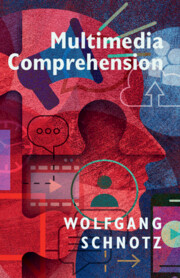Book contents
- Multimedia Comprehension
- Multimedia Comprehension
- Copyright page
- Dedication
- Contents
- Preface
- Chapter 1 Introduction
- Chapter 2 A Short History of Multimedia Sign Systems
- Chapter 3 Basic Forms of Representations
- Chapter 4 Comprehension of Text
- Chapter 5 Comprehension of Pictures
- Chapter 6 Integrative Comprehension of Texts and Pictures
- Chapter 7 Quasi-symbiotic Relations between Text and Picture Comprehension
- Chapter 8 Beyond Comprehension
- Chapter 9 Practical Implications
- Concluding Remarks
- References
- Index
Chapter 3 - Basic Forms of Representations
Published online by Cambridge University Press: 16 February 2023
- Multimedia Comprehension
- Multimedia Comprehension
- Copyright page
- Dedication
- Contents
- Preface
- Chapter 1 Introduction
- Chapter 2 A Short History of Multimedia Sign Systems
- Chapter 3 Basic Forms of Representations
- Chapter 4 Comprehension of Text
- Chapter 5 Comprehension of Pictures
- Chapter 6 Integrative Comprehension of Texts and Pictures
- Chapter 7 Quasi-symbiotic Relations between Text and Picture Comprehension
- Chapter 8 Beyond Comprehension
- Chapter 9 Practical Implications
- Concluding Remarks
- References
- Index
Summary
Sign systems help to create descriptive and depictive representations. Descriptive representations operate on symbols. They are based on conceptual analyses identifying objects or events as well as attributes and interrelations. Attributes and relations are ascribed by predications to entities according to syntactic rules resulting in so-called propositions (“idea units”). These propositions can be integrated into coherent semantic networks. Propositional representations are considered as mental structures which can be externalized in the form of spoken or written texts. Despite their informational incompleteness, descriptions have high representational power. Depictive representations are based on inherent commonalities between a representing object and the represented subject matter. The inherent commonalities can be based on similarity or analogy. These representations are complete with regard to a certain class of information. Due to their completeness and consistency and because information can be read off directly, depictive representations have high computational efficiency.
Keywords
- Type
- Chapter
- Information
- Multimedia Comprehension , pp. 39 - 62Publisher: Cambridge University PressPrint publication year: 2023



